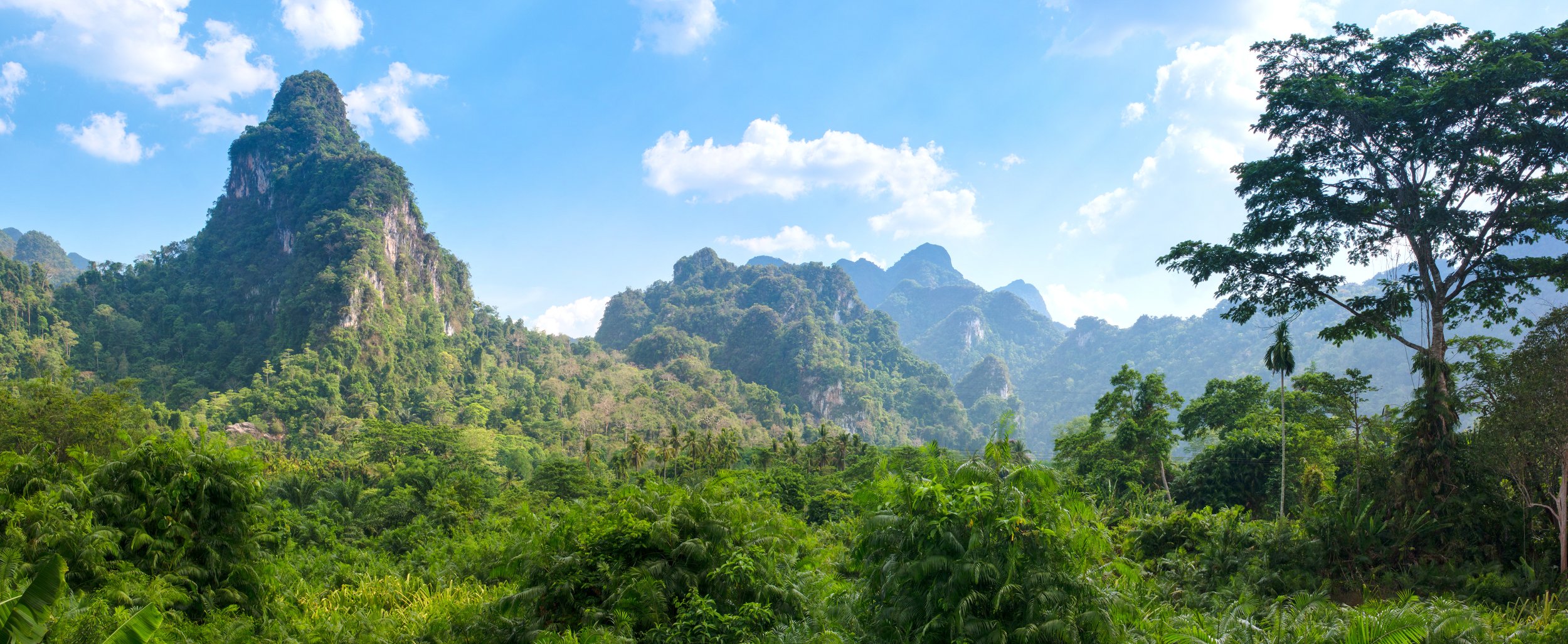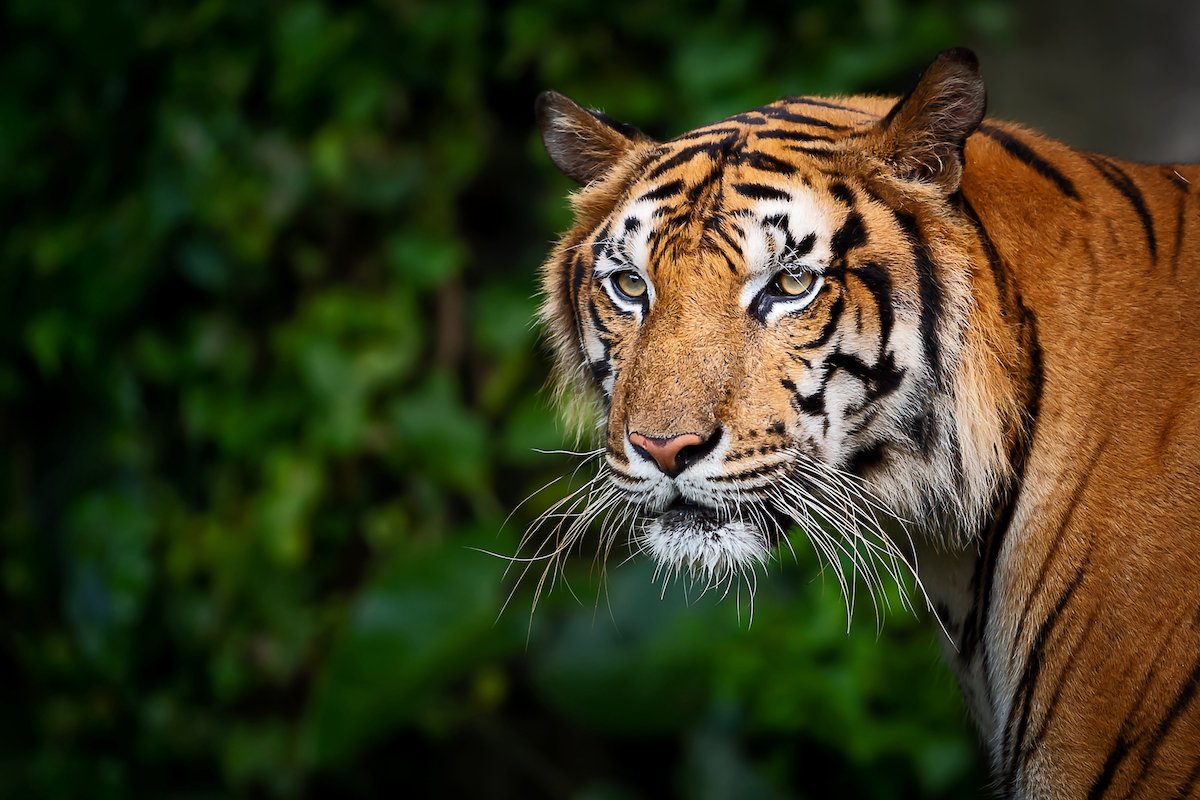250% Rebound in Indochinese Tiger Recovery in Thailand Directly Attributable to Better Law Enforcement
Global Conservation funded Tiger Habitat Protection in Umphang-Thung Yai, a UNESCO World Heritage Site in Thailand’s Western Forest Complex (WEFCOM) from 2020-2024 and Thap Lan National Park from 2016-2021.
Thailand’s remarkable success, increasing the number of tigers in WEFCOM from about 40 to more than 140, stands in stark contrast to the tiger’s fate elsewhere in Southeast Asia. Global Conservation supported WCS Thailand for Park and Wildlife Protection, combining Global Park Defense and Community Protection.
Tigers disappeared from Cambodia, Laos, and Vietnam by the mid-2000s and continue to be under pressure from hunters and poachers as well as from the loss of their forested habitat.
Tigers are now clinging to the last individuals of the species elsewhere in Southeast Asia, with small or isolated populations in Sumatra, Peninsular Malaysia, and Myanmar.
In contrast, Thailand has seen a 250 percent increase in tiger numbers recorded there due to the great work of Thai Park and Wildlife and their partners, WCS Thailand and Freeland, both supported by Global Conservation.
Tigers disappeared from Java and Bali before the 21st century and from Cambodia, Laos, and Vietnam by the mid-2000s. Elsewhere throughout the region, tigers are still under enormous pressure from poachers as well as from the loss of their forested habitat. As a result, tigers now persist elsewhere in Southeast Asia only in small or isolated populations in Sumatra, Peninsular Malaysia, and Myanmar.
Thailand’s remarkable success, increasing the number of tigers in WEFCOM from about 40 to more than 140, stands in stark contrast to the tiger’s fate elsewhere in Southeast Asia.
“We see very strong correlations between better law enforcement and the recovery of tigers.”
Pornkamol Jornburom, Director of WCS Thailand
Pornkamol Jornburom, Director of WCS Thailand, credits this good news to the efforts of Thailand’s Department of National Parks, Wildlife, and Plant Conservation (DNP), which implemented high-quality patrolling, insulating tigers and their prey from poaching and the destruction of habitat. “We see very strong correlations between better law enforcement and the recovery of tigers,” said Jornburom. “Prior to this, illegal hunting and logging were rife in WEFCOM, and tigers were on a path toward extinction. Here, as elsewhere in Asia, good enforcement is the cornerstone of the tiger recovery process.”
Somphot Duangchantrasiri, a senior scientist with Thailand’s DNP, led this work, which has been published in the scientific journal Global Ecology and Conservation. He said, “This new study is great news for tigers in Thailand. From the beginning, it was our goal to set up a statistically robust monitoring system to ensure we would have reliable information that could accurately track recovery efforts. We believe this is a good example of how to set up and maintain a strong, independent monitoring program that brings credibility to tiger recovery efforts.”
As WEFCOM’s apex predator, tiger populations are a signal of the overall health of the ecosystem, so the team also closely monitored the wider effects of rigorous patrolling. Two companion research papers report a dramatic recovery in prey populations, which includes the first documented cases of banteng, an endangered species of wild cattle, appearing in previously unreported parts of the forest.
Apinya Saisamornin from WCS and Kasetsart University in Bangkok, where she specializes in tiger prey, said, “Tigers can’t exist in the wild without a healthy abundance of prey species. Our study showed a doubling in numbers of both sambar [a large, elk-like deer] and banteng, the key prey species for tigers in WEFCOM. Without the recovery of prey, tiger numbers could not have grown as large as they did.”
A Thai tycoon faces charges for poaching in a protected sanctuary.
Thai Rangers raided the camp of a corporate executive in the WEFCOM Complex, apprehending him redhanded for hunting black panthers, while his wife was preparing one for cooking. Police have charged the head of one of Thailand's largest construction firms for allegedly poaching in a protected wildlife sanctuary.
Authorities released photos of Premchai Karnasuta with hunting gear and animal carcasses, including a black panther. Park rangers arrested three other suspects and seized three rifles, 143 bullets, and other hunting tools at Thungyai Naresuan National Park. The slain animals—a black panther, a Kalij pheasant, and a barking deer—are all protected species under Thai conservation law.












